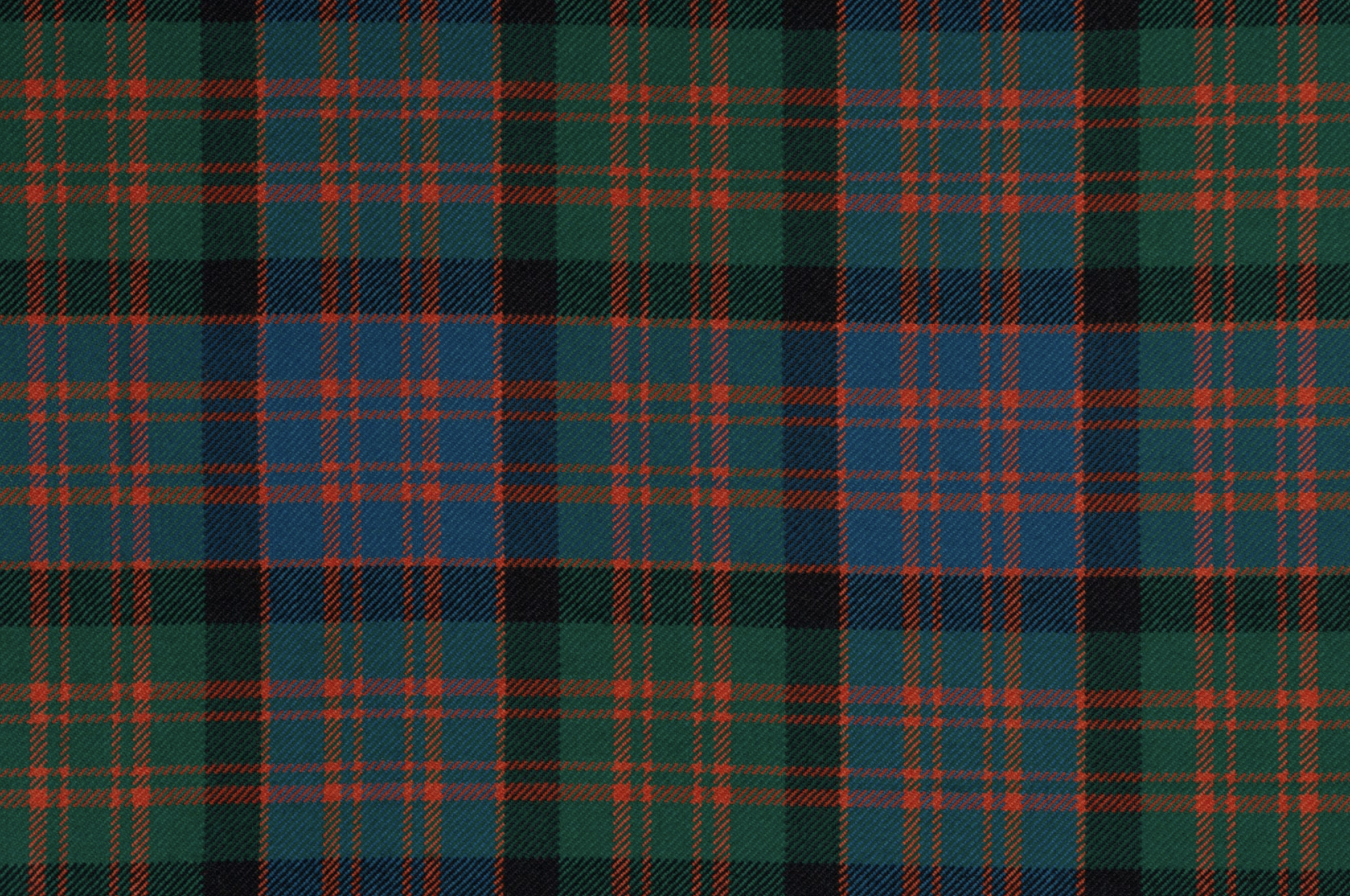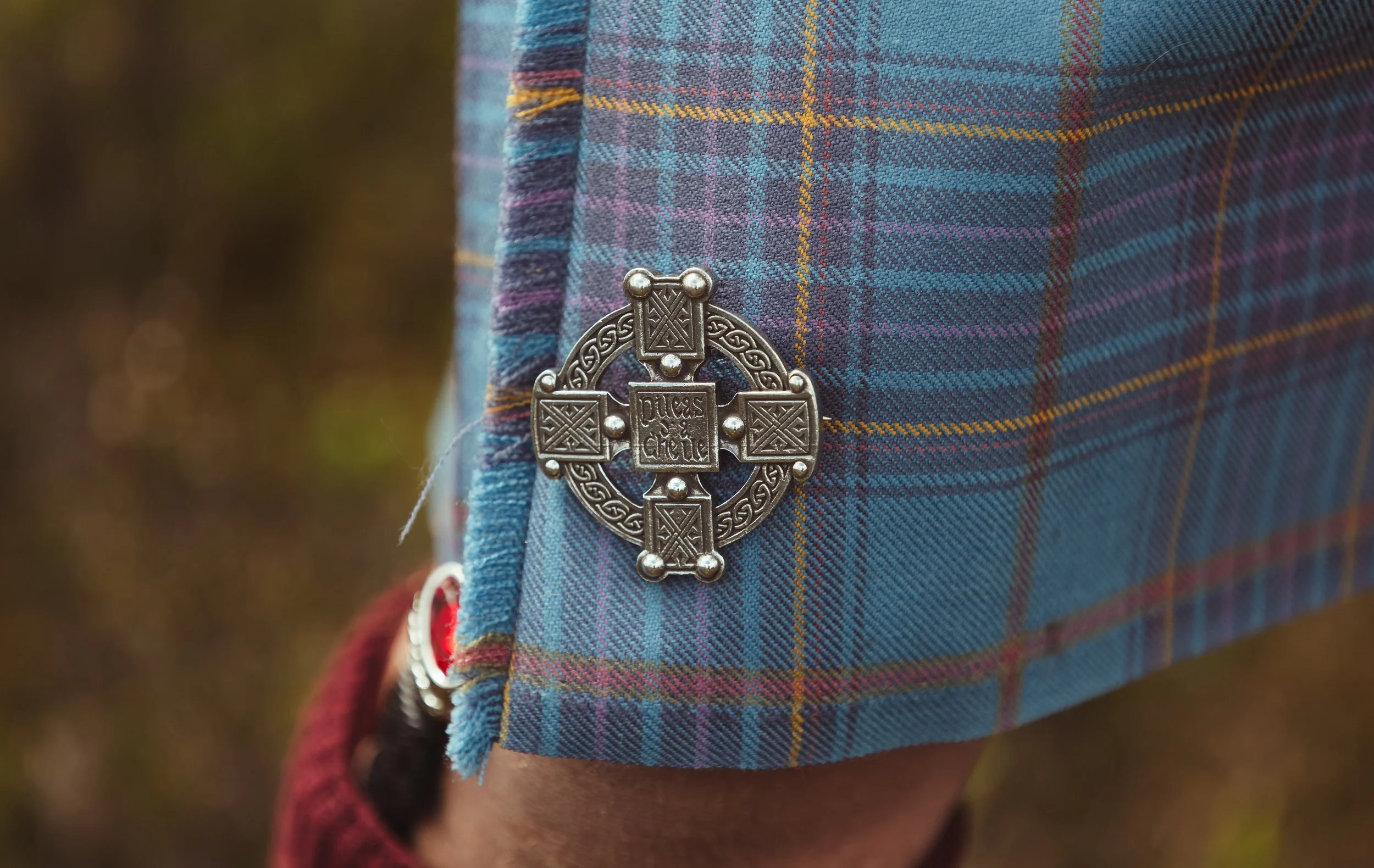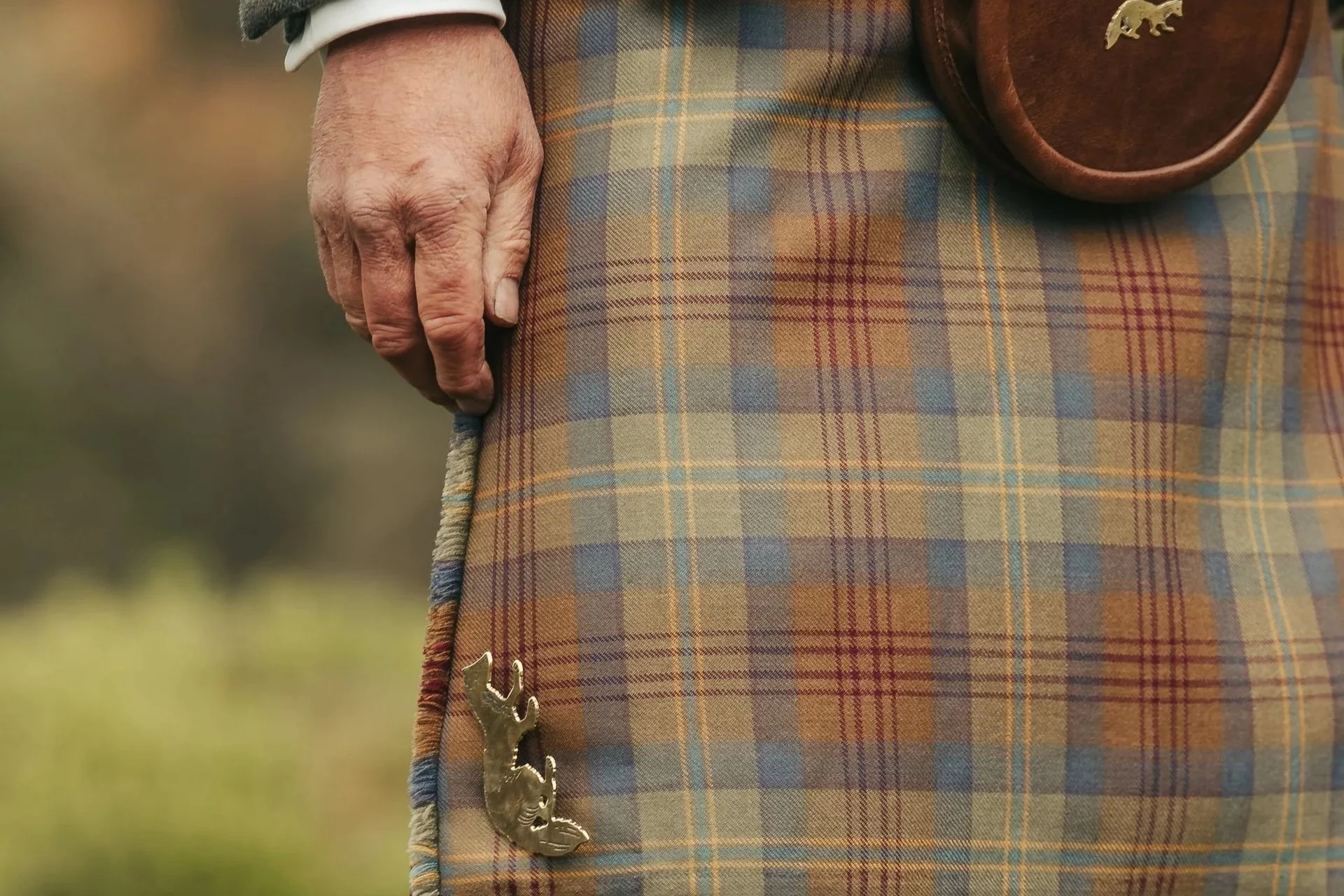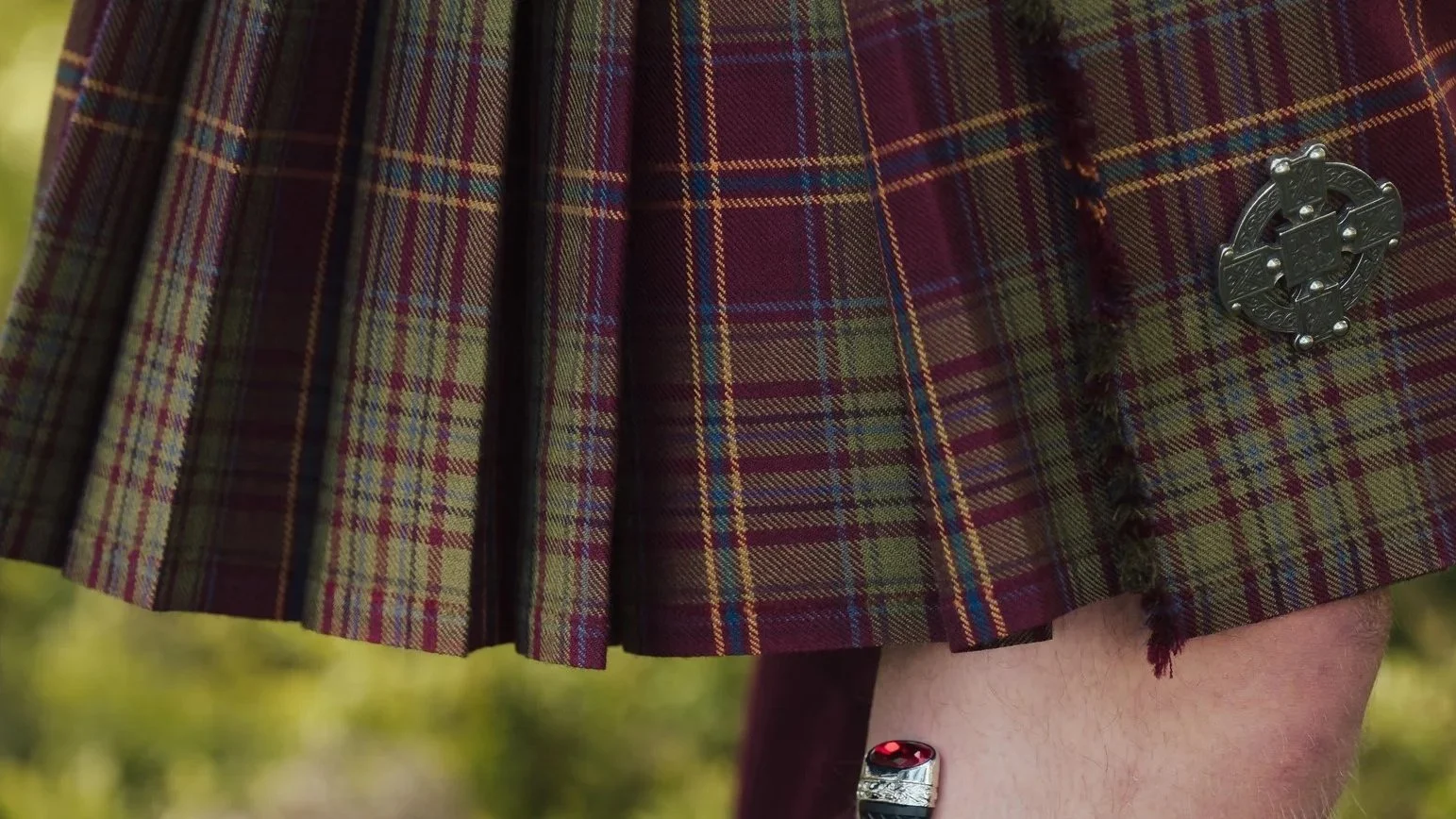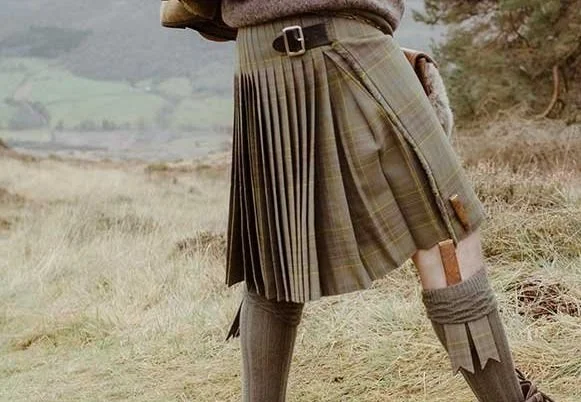Scotland’s Intertwined History with Tartan
By Nicholas Martin
Introduction
Tartan has long functioned as more than a textile. It is a visual signifier, a national symbol of Scottish identity and a repository of cultural memory. Its meanings and beginnings have been a point of contention within Scottish Historiography. As Ian Brown writes in ‘From Tartan to Tartanry (2010)’, tartan's significance “lies not only in its textile presence, but in the multiple and sometimes contradictory narratives that have been layered upon it.”
This post is the first edition of a regular stream of information surrounding Scotland's past, blending two of my passions; Scottish history and the garments and cloths that embody it. This specific post will aim to explore the narratives and stigmatic approaches which shroud tartan and its origins. Not simply to tracing a chronology, but to interrogate tartan’s construction, commodification, and resilience as both material and myth.
Tartan, viewed solely through its visual form, set aside from its deep linguistic and cultural resonance, is an inherently vibrant and structured textile. Its colourful boldness and repetition have drawn comparison to natural order and aesthetic harmony. In ‘A Journey through Scotland’ (1723), one observer likened the sight of women in tartan within a church to a ‘parterre de fleurs’ (a formal flower garden). This analogy is apt: the pattern, or sett, of a tartan, though seemingly chaotic at first glance, is in fact carefully constructed. Like the cultivated rows of a garden bed, each line and intersection in a tartan is intentional, holding embedded meaning and symbolic value.
This can be shown in the MacDonald tartan (Image 1), a design both rich in contrast and cultural signification. Its colours are far from arbitrary, which can be shown by an interpretation of its Tartan; blue reflects the clan’s maritime ties in the Western Isles; green suggests their rooted presence in the fertile western Highlands; black evokes the rugged, austere landscapes of their ancestral lands; and red, often associated with courage, recalls their enduring role in Highland conflict and resistance. This is evidenced by their role, in my opinion, as one of Scotland's most influential and historically interesting Clans, assuming a semi-autonomous control of a vast region during the period of the Lordship of the Isles (133-1483) This provided Scottish historians a reservoir of material information which is shown through the traditional narrative of the MacDonalds being the emblematic Patrons of Scottish Gaelicism.
Image 1: MacDonald Tartan (Ancient)
Linguistic and Cultural Origins: The Eponyms of Tartan
The word tartan, within the backdrop of Scotland, is linguistically elusive. The Dictionary of the Scots Language suggests it derives from Old French ‘tiretaine’, a fabric composed of wool and linen or cotton, highlighting tartan’s early hybridity, both in form and origin. Gaelic, however, offers a different route: ‘tarsainn’, meaning “across.” Yet historically, Gaelic-speaking Highlanders referred to the fabric as ‘breacan’, from ‘breac’, meaning “speckled” or “mottled.” This semantic complexity resists essentialist readings of tartan as either uniquely Gaelic or strictly Scottish. As Brown observes, “tartan’s linguistic roots are intercultural and elusive, but intriguingly so,” reflecting the broader cultural hybridity of Scottish identity itself.
Tartan and the Politics of Rebellion
By the eighteenth century, tartan had become inseparable from the political tensions of the Highlands. Its symbolic weight was such that it was proscribed under the Disarming Act of 1746, which also included the Disclothing Act, following the Jacobite uprising. This outrage at the restriction can be seen through prose, such as Duncan Bàn MacIntyre’s ‘Òran don Bhriogais’ (‘Song to the Breeks’) which offers a ‘robust message’ in response to this Act, showing how deeply Highlanders internalised tartan as an extension of cultural identity. The legislation may have aimed to suppress rebellion, but in doing so, it confirmed tartan’s political potency. The mere fact that the restriction of Tartan fell within the same Act as the banning of weaponry demonstrates this poignancy of Highland Dress, and its significance as a symbol of Scottish identity.
‘The Great Clan Tartan Myth’
One of the most enduring tartan myths is the assumption of a timeless, unbroken link between specific tartans and clans. While this idea enjoys widespread cultural traction, its historical basis is far more ambiguous. Colin McArthur has gone so far as to call this connection a “grotesque act of mythmaking,” noting its codification during the early nineteenth century, a royal visit to Edinburgh in 1822.
M. M. Haldane’s 1931 essay, The Great Clan Tartan Myth, offers a pivotal critique. He notes that while specific examples exist, such as the Laird of Grant ordering tenants to wear red and green tartan in 1704, these were exceptions rather than norms. Indeed, the very fact they were recorded suggests their novelty.
Yet, while these historians suggest that these tartans come from the romanticism of the Highlands, through works such as Sir Walter Scott’s, tartan and the colours that are woven into it are undoubtedly rooted in its location. These historians offer a lazy critique of Tartan history. While there may not be much credence in the Clan tartans dating back to the medieval period, tartan has been worn by Scottish inhabitants since the 9thcentury. The dye and construction of it was rooted in their environment. Yes, as it has been claimed that through trade links these could have been adapted to varying dyes, the predominant construction of the tartan sett was through accessible dyes. This is further supported by Celtasist William Forbes Skene (1809-92), where he states ‘sculptured monuments which bear evidence of the existence of the Highland garb [. . .] afford complete proof of its having been the ordinary dress of a considerable part of the northern population from the earliest period of their history. There is thus distinct evidence for the remote antiquity of this dress.
The Commodification of tartan
Post-Culloden, the Highlands were mythologised as simultaneously dangerous and picturesque. Tartan, once proscribed, re-entered public life through ceremonial and imperial channels. Regimental kilts, romantic literature, and Victorian tourism all contributed to what has been termed tartanry, a commodified, aestheticised version of Highland culture.
Mass production, beginning with Wilsons of Bannockburn, the first commercial tartan weavers allowed tartan to move beyond its regional origins. By the late nineteenth century, it was not only a symbol of clan, but of nationhood packaged, sold, and exported as Scotland’s visual shorthand.
This, however, can be seen as an exciting redefending of Scotland's national dress. Long has it been synonymous with ‘barbarity’, shown even as early as John of Forduns 12th century writings. Therefore, the encouragement to wear tartan now, and the symbolic recognition it gets in the modern age shows a move from a stigmatised Highlands to one that is celebrated.
Our Contemporary Approach, rooted in history: Landscape as Identity
At Highland Outfitters, we approach tartan not as costume nor fixed tradition, but as living design. Our Call of the Wild tartans are not affiliated with clans but with place, season, and mood. Taking the traditional tact, we have utilised our surroundings to create four tartans which promote the nature of the Highlands.
Summer Tartan evokes azure skies, purple heather, and the shimmer of Northenr Blue damselflies. (Image 2)
Autumn Tartan blends bracken and moss with the gold of chanterelles. (Image 3)
Winter Tartan combines the warmth of firelight with the cold of the Tay and evergreen holly. (Image 4)
Spring Tartan; The soft green of new birch leaves, paired with the yellow of primroses and purple of violets, weaves the essence of spring into our tartana tribute to the quiet beauty of returning growth. (Image 5)
These tartans are expressions of geography as identity, a move away from inherited association toward intentional choice. In this sense, we do not reject tartan’s myths, we contribute new ones.
Conclusion
Tartan endures not because it is static, but because it evolves. Its meanings shift across time, class, and context. It has been worn in rebellion and in reverence, as uniform and as protest, by monarchs and by exiles.
Today, it invites redefinition. Whether you wear it in memory of ancestors, in honour of land, or simply because its colours speak to you, tartan retains a rare capacity: to be both personal and public, deeply traditional and newly imagined. This is why Tartan does not have to be worn at a black-tie event or a wedding, but to wear tartan is a celebration of Scottish history and tradition, at any point.

